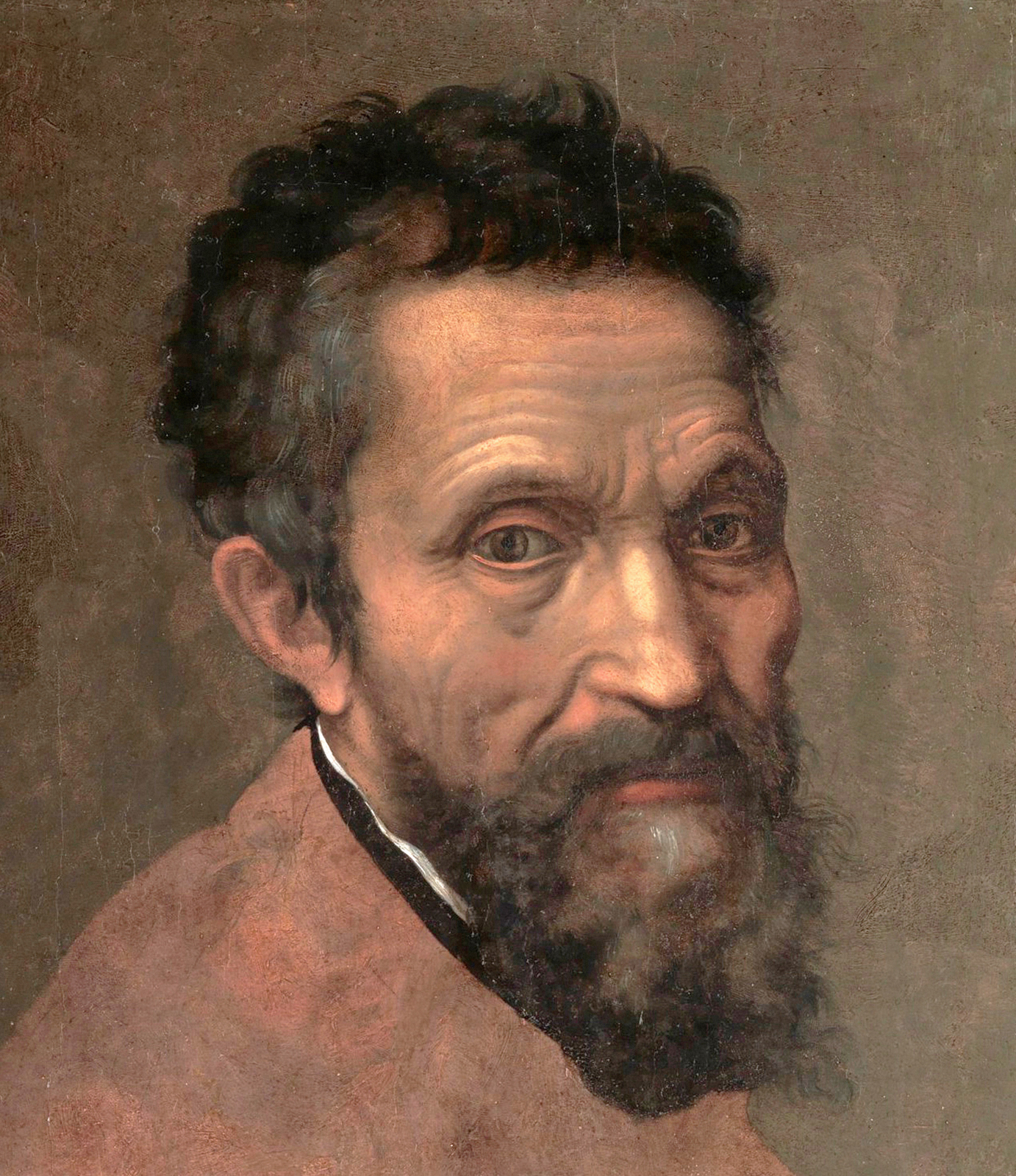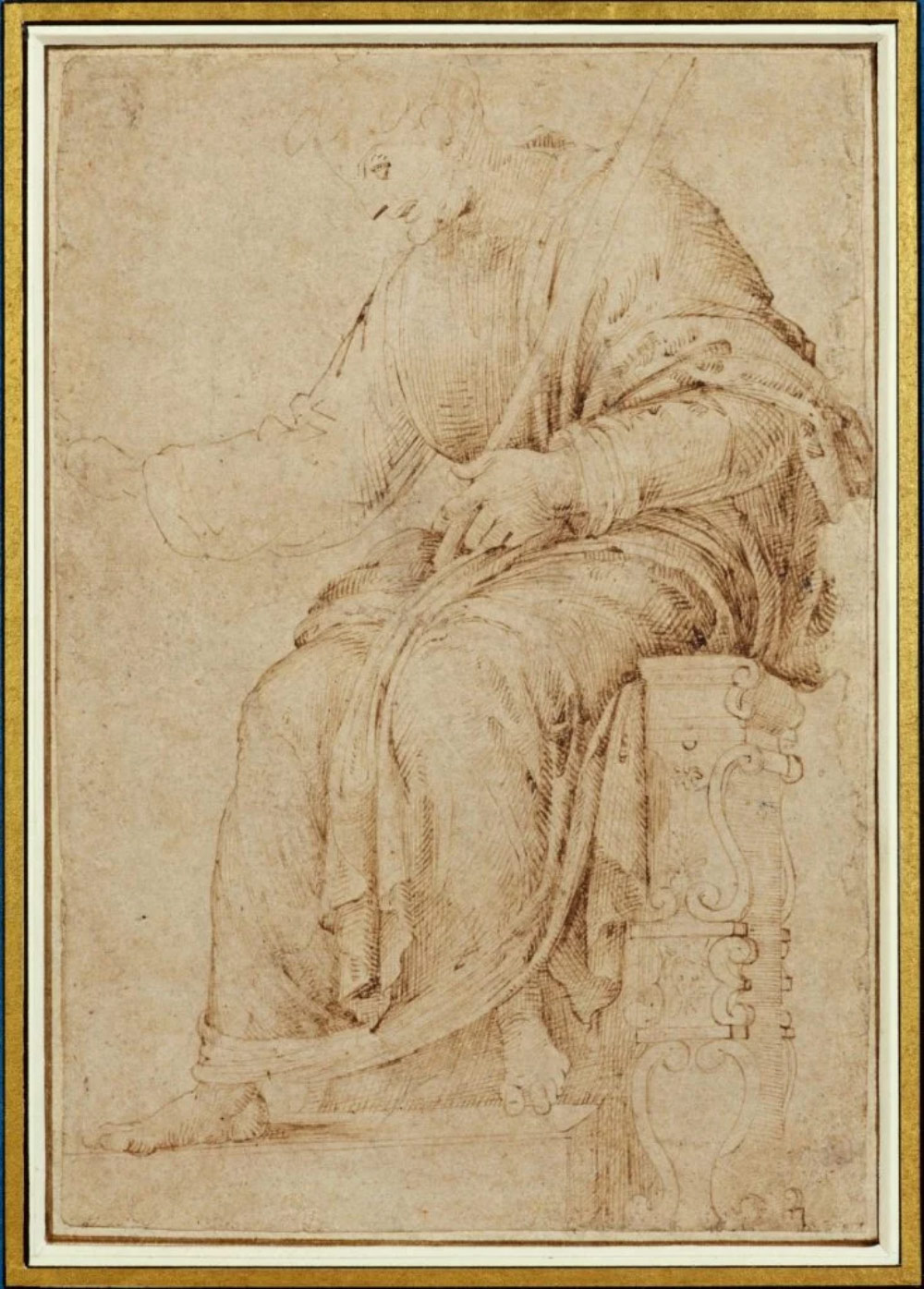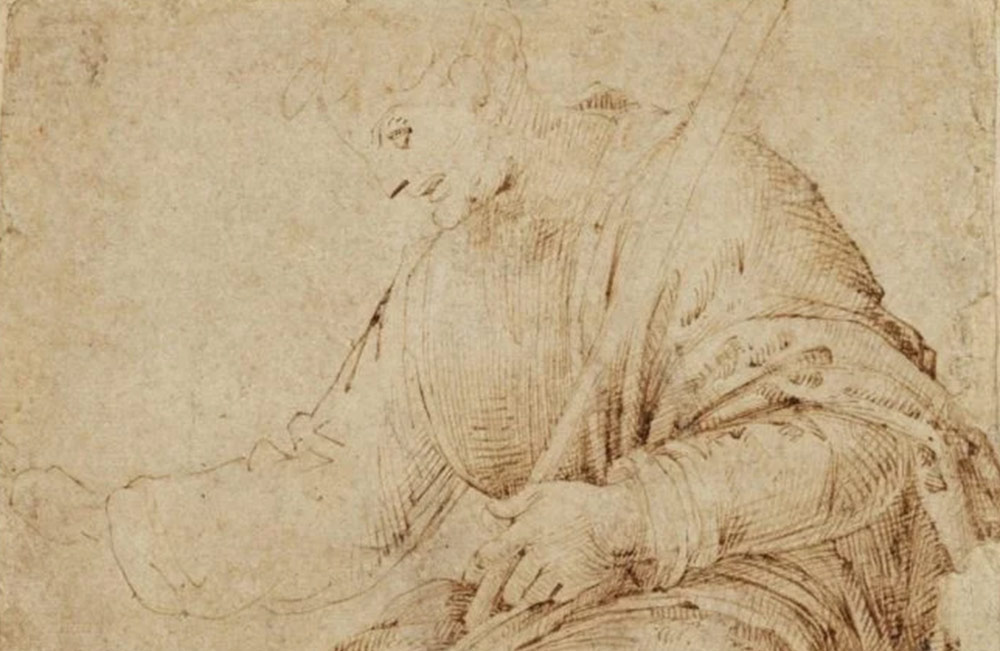In the rarefied world of Old Master drawings, few names ignite as much fascination—and controversy—as Michelangelo. The most recent addition to his oeuvre, a long-debated sketch titled Study of Jupiter, has finally emerged from the shadows and onto the market. This delicate yet assertive drawing is now being presented at Italy’s 33rd Biennale Internazionale dell’Antiquariato di Firenze by the London-based Dickinson gallery. The piece, considered the earliest known drawing by Michelangelo, offers an extraordinary glimpse into the burgeoning genius of an artist who would eventually redefine the possibilities of the human form.
For decades, Study of Jupiter languished in anonymity, even after its purchase by an anonymous British collector at a 1989 auction. It wasn’t until former Louvre conservator André Le Plat examined the drawing that speculation about its true origins began. The piece depicts Jupiter Enthroned, a known marble fragment from the 1st–2nd century CE, but with a striking twist: Michelangelo (if we accept the current attribution) fleshed out the Roman god with a torso, blending classical realism with artistic imagination in a way that feels unmistakably his own.
As with many Renaissance drawings, the road to attribution was fraught with conflicting opinions. Early on, the British Museum’s Nicholas Turner attributed the work to Domenico Ghirlandaio, Michelangelo’s master, citing the distinctive tear-drop folds in Jupiter’s robe as evidence. The argument made sense: drawing ancient marbles was a popular exercise in the 15th century, and Ghirlandaio himself could have traveled to Rome to study the statue. But subtle discrepancies between the sketch and the marble—such as Jupiter’s mispositioned left foot—raised doubts. Eventually, experts began suggesting that the drawing was copied from another sketch, not the original sculpture. Names were floated, including Fra Bartolommeo, only to be dismissed.

Then, in the 2010s, William and Mary professor Mike Chappel introduced a new contender: Michelangelo himself. After surveying Michelangelo’s early work across several institutions, Chappel, along with Cambridge professor Paul Joannides, began to notice stylistic patterns in Study of Jupiter that aligned with the young artist’s evolving technique. The definitive moment came in 2019 when the drawing was featured in the Budapest Museum’s exhibition The Triumph of the Body, finally cementing its attribution to Michelangelo.
For those familiar with Michelangelo’s early years, the attribution makes historical sense. Michelangelo entered Ghirlandaio’s workshop in 1487 at the tender age of twelve, becoming an official apprentice the following year. He remained in the studio until 1490, a period when Ghirlandaio’s influence would have been fresh in his mind. Comparative analysis further supports this view. The Louvre’s collection includes what was previously the oldest known Michelangelo drawing, a sketch of two figures after Giotto from 1490–1492. The similarities between this work and Study of Jupiter are striking, particularly in their shared Ghirlandaio-inspired elements and awkwardly rendered hands—a telltale sign of Michelangelo’s early focus on monumental forms rather than precise anatomy.
Study of Jupiter thus offers not just a glimpse of Michelangelo’s burgeoning talent but also a missing link in the artist’s stylistic evolution. The use of two tones of brown ink, a hallmark of Michelangelo’s early work, adds depth to the figure in a way that feels both tentative and visionary. It is a study not just of a god enthroned, but of an artist on the cusp of greatness.

The rarity of such a piece cannot be overstated. Michelangelo, ever the perfectionist, famously ordered many of his drawings to be burned, preferring that his genius appear effortless. As a result, few of his sketches remain. The last time one surfaced, it fetched $21 million at auction—a staggering sum, though notably below its $30 million estimate. The outcome of Study of Jupiter’s journey onto the market is as unpredictable as the Renaissance master himself, but one thing is certain: this latest addition to the Michelangelo canon will only deepen the allure surrounding his early career, a period still shrouded in both mystery and brilliance.







